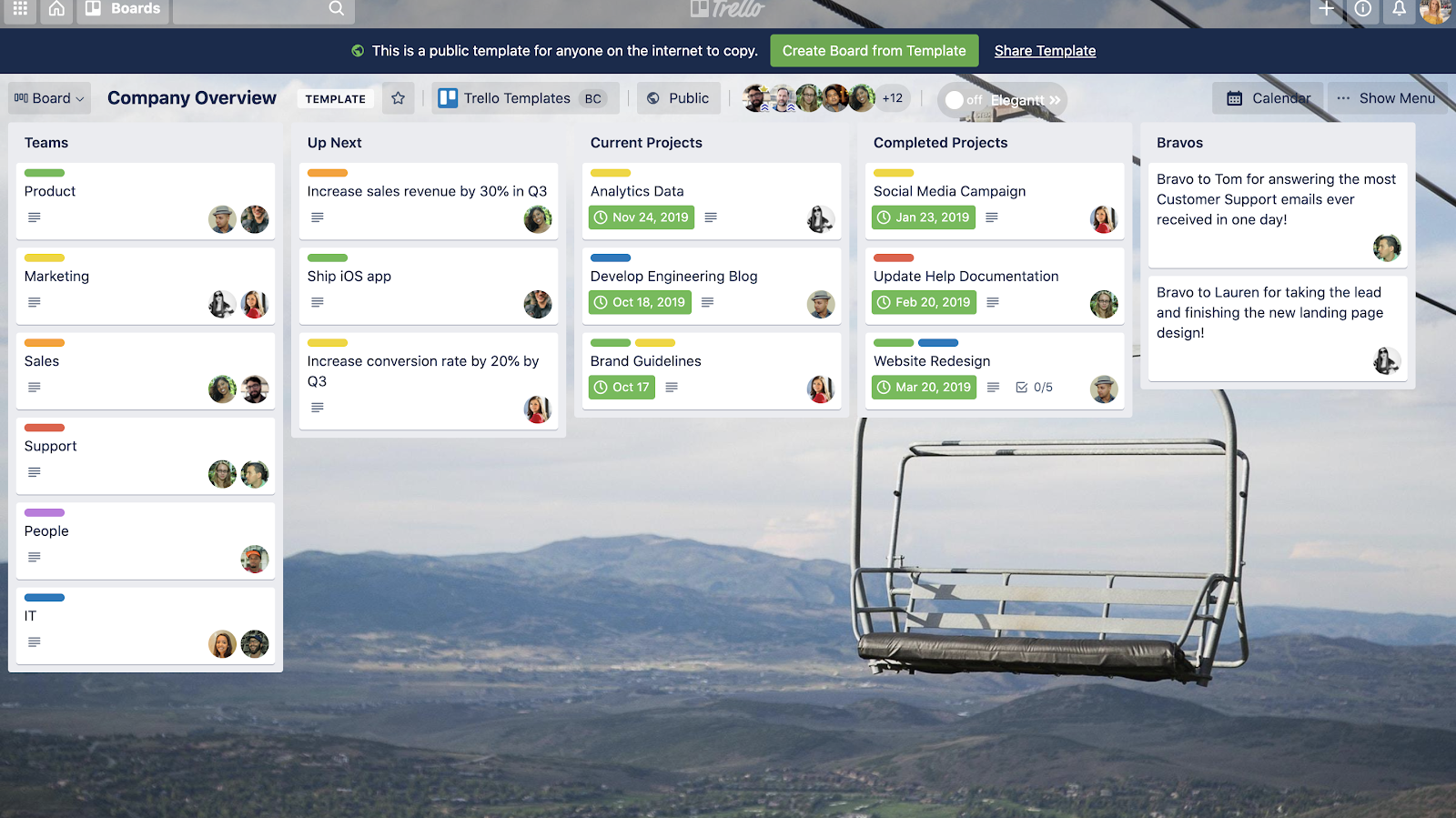The phrase “silo effect” might sound a little eerie at first, like a reference to a creepy sci-fi movie that takes place on a farm. But what is it, really?
Its actual meaning is equally as terrifying. The silo effect occurs when separate departments or teams within an organization don’t have a system to communicate effectively with each other—and productivity and collaboration suffer because of it. One classic example of the silo effect is when two departments are working on practically identical initiatives, but neither of them is aware of what the other is doing.
Despite the fact that employees are more technologically interconnected than ever before, the silo effect continues to be a problem for teams of all types. According to Clear Company:
- 39% of employees within a surveyed group believe that there isn’t enough collaboration between teams in their organization.
- 86% of polled executives and employees blame a lack of collaboration or bad communication for team problems and failures.
- Less than 50% of respondents thought their organizations effectively and honestly discussed issues with employees.
Let’s explore how your organization can improve cross-team collaboration through the right digital tools and communication processes.
Strike The Balance Between Segmentation And Team Collaboration
Remote environments, managerial differences, lack of collaborative tools, and misalignment on goals are all reasons why team silos may develop. After all, different teams usually specialize in different areas—and that’s a good thing. A Jack of all trades is a master of none, right?
But too much segmentation hurts productivity, profitability, and cross-team cohesion. So although the silo effect causes problems for teams, getting rid of silos altogether will result in additional unwanted chaos.
How can organizations foster cross-team collaboration while maintaining necessary job differentiation? While team members within different areas of the organization might not work together on a day-to-day basis, it’s important that the managers of these separate teams do.
Weekly leadership meetings can help many organizations to keep each team informed of what other departments are working on. Especially with larger organizations, discussions of company goals during these meetings can also help managers decide how to best share and divide up work among departments—which gives team members unique opportunities to collaborate.

Sometimes silos can develop because of differences in opinion or barriers between department leaders over priorities. This is another thing that can be alleviated with open and honest meetings—as opposed to just one or two executives being the only people who really know what’s happening company-wide.
Harness Individual Skills For A Collective & Collaborative Win
Meaningful creative collaboration between employees with various skill sets is another great way to facilitate long-term communication and alleviate the effects of a silo. Create opportunities for employees to work closely together on large-scale projects that matter.
According to HR.com, identifying and catering to different skill sets is a way to prevent “one size fits all” approaches to management. By identifying the strengths of each team member, it’s easier to find areas where two or more people can work together to mitigate each other’s shortcomings.
This will not only lead to high-quality and well-rounded work but will also help create a sense that everyone involved is building something impactful together—and these types of shared experiences forge real bonds. It can also make things easier on management, thanks to cross-departmental communication.
When Mainstreethost, a Digital Marketing and SEO agency, upgraded their website they utilized this tactic to great success. As one of their Content Strategist explains:
“Coming together to redesign our company’s website was hugely impactful for all involved. Not only had most of us never worked on a project of this scale, but coming from different departments, we had never worked together on any project. By communicating consistently through a coordinated Trello board—as well as getting together face-to-face—we were able to bring our shared vision to life. I can honestly say that each member of the team walked away with more knowledge than we had when we began the project.”
Tools To Stay Connected
There are many tools out there specifically designed to facilitate communication between employees wherever they are. And when you’re trying to open up lines of communication between separated groups, convenience and efficiency are especially important because everyone has to be on the same page.
Discover four tools to keep connections close and visibility high across the whole organization.

Trello
As you probably already know, Trello is the perfect tool to kick silos to the curb. Create boards for brainstorming, housing projects, or storing information—and tag employees to loop them in on what’s going on.
Use the Company Overview board template to get a headstart on fostering better communication and providing more visibility into major projects, initiatives, and goals across the organization.
- Create cards for each department and add respective members so anyone at the company can connect with those individuals (far left list).
- Assign a project owner to each project card. They are in charge of updating the card on a regular basis.
- Link to appropriate Trello boards, Slack channels, etc. so that everyone at the company knows where to find more detailed information or relevant discussion.
The Card Aging Power-Up can help identify projects that may be falling by the wayside or need updating.

Confluence
With Confluence, teams can create, collaborate, and organize their work in one place. This team workspace tool is perfect for storing knowledge and making it visible across teams. Every team member has visibility into institutional knowledge and access to the information they need in order to do their best work.
Slack
Gone are the days of sending hundreds of files, clarifications, or questions back and forth via an endless email chain. Most companies have a chat platform, like Slack, to help them stay connected with colleagues during the day.
Create certain channels for segmented topics or specific teams, and other channels that include all teams across the company. By doing this, you can keep conversations specific to the team or open it up to a broader conversation.
Google Drive
Google Drive is an obvious example of a tool that encourages visibility and collaboration. The Documents feature, for example, allows for multiple users to edit a single document simultaneously and in real-time.
The Google Drive Power-Up in Trello provides previews and metadata about the doc, including recent updates and when it was created. Instead of attaching Word document after Word document with edits and re-edits, Trello allows you to bring in team members to connect directly on one single Google Doc.
If you’re looking for even more collaboration capabilities, Slack is another platform that can actually combine Google Docs, Trello notifications, and other attachments all in one place!
One could almost say that these three together are kind of a trifecta of transfers, a pod of productiveness, a cluster of communications.
Create A Seamless Customer Experience
The technology and remote landscape have completely changed company dynamics and roles. This means that many professionals have had to venture outside their comfort zones as roles shift along with trends.
A great example of this is the traditional customer service department and social media teams. In the past, customer service representatives communicated with customers over the phone, and later on through online reviews. But nowadays, the roles of social media specialists and customer service professionals are pretty blurred.
According to Hootsuite, social media is the preferred customer support channel for those under 25, with 32.3% of them saying it’s their top choice. This trend has forced social media experts to develop some customer relations skills and vice versa. It also creates a need for these two departments to develop some common goals, best practices, and a consistent voice.
From a customer experience standpoint, it’s confusing to have someone on the phone telling you one thing, while another department is tweeting out totally opposing information. In situations like these, cross-team collaboration is an absolute must.
Come Together, Right Now, All The Teams
Say goodbye to the days of thinking: “Oh, I thought they were working on that initiative,” and “What does that department even do?”.
Providing an enjoyable and seamless experience for employees, your customers, and business partners should be enough motivation to start bringing your employees together a little more. With the right intention, a shared vision, transparent conversations, and the right tools, your organization can nurture cross-team collaboration in the spaces that team silos used to dominate.







































